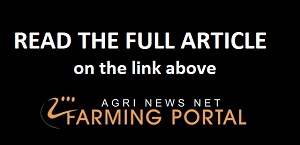The recently signed Agriculture and Agro-Processing Master Plan (AAMP) has pinned the overarching policy direction on the widespread consensus for the need to promote meaningful participation by all players and stakeholders, whether small, medium, or large businesses in the agricultural value chain.
The agreed vision for the future is to create a globally competitive agricultural value chain which is driven by market-orientated and inclusive production that develop rural economies, ensure food security, and create growing, decent, and inclusive employment and entrepreneurial opportunities for all participants. The AAMP creates the policy framework to deliver against the vision of achieving transformation across all agricultural value chains and sub-sectors. However, despite the clear AAMP vision and the wide range of existing transformational projects driven by both government and industry, the metric for determining the baseline and measurements for progress is not consistent, nor standardised across projects or commodities. Furthermore, few initiatives accurately evaluate and report on the overall economic and socio-economic impacts of interventions and investments. The lack of consistent measurement and reliable data needs to be addressed in a multipronged monitoring and evaluation approach that focuses on farm-level and industry level data collection, aggregation (to anonymise), integration, evaluation and reporting. Industry and value chain specific transformation progress can only be measured when the individual entity and aggregate programme impacts and sustainability are accurately and consistently assessed on a time series basis. Monitoring &Evaluation should not be viewed as an isolated function or requirement linked to transformation programmes but rather a core enabler for the entire sector. Defining the key performance indicators, industry and programme resource capacity and competency requirements, data structures and processes are all essential in achieving success. Accurate and consistent reporting on area, productivity, profitability, market participation, and trade competitiveness are some of the key metrics critical to creating a globally competitive and inclusive agricultural sector.
BFAP understands the importance of credible data that is structured and analysed through the application of globally accepted econometric, statistical and spatial analytical tools. BFAP’s data, modelling and analytical offering has been further enhanced by the investment into Integrated Value Information System (IVIS) a software platform that offers customised systems solutions for data integration, advanced analytics, geospatial contextualisation, and insights visualisation through interactive maps and reporting. Development programmes have typically been under resourced and budgeted in terms of data requirements and reporting but the move to blended finance funding structures for transformation programs and the requirement for supported growers to repay contractually agreed instalments of their development funding, requires a mind-set shift in data requirements and reporting. Both the funder and the beneficiary have a longer term vested interested in monitoring performance to manage risks. BFAP currently works with a range of public and private clients to support in the development and implementation of a systemised methodology and framework around the design and integration of data requirements and processes that enable accurate and consistent measurement and capture of data in a structured and standardised approach.
Monitoring &Evaluation should not be seen as something that is done at the end of an initiative or programme to report on historic performance but rather a tool to provide real time information and insights that enable efficient and effective decision making to drive future sustainability and impact. Some of the services and product offerings that BFAP provides are: - Industry standardisation of metric and reporting - Advisory in defining an integrated framework for monitoring and evaluation, including clarifying performance criteria, data requirements and processes, resource structures, and capacity and competency to support deliverables. - Geo-spatial contextualisation - Seasonal data collation, systems integration, and analysis for dashboard and reporting - Evaluation of time series performance and reporting - Industry benchmarking - Scenario analysis and foresight - Socio Economic Impact evaluation, reporting and decision support - Insights into integrated analysis of regional population demographics - Interactive visualisation and reporting,















